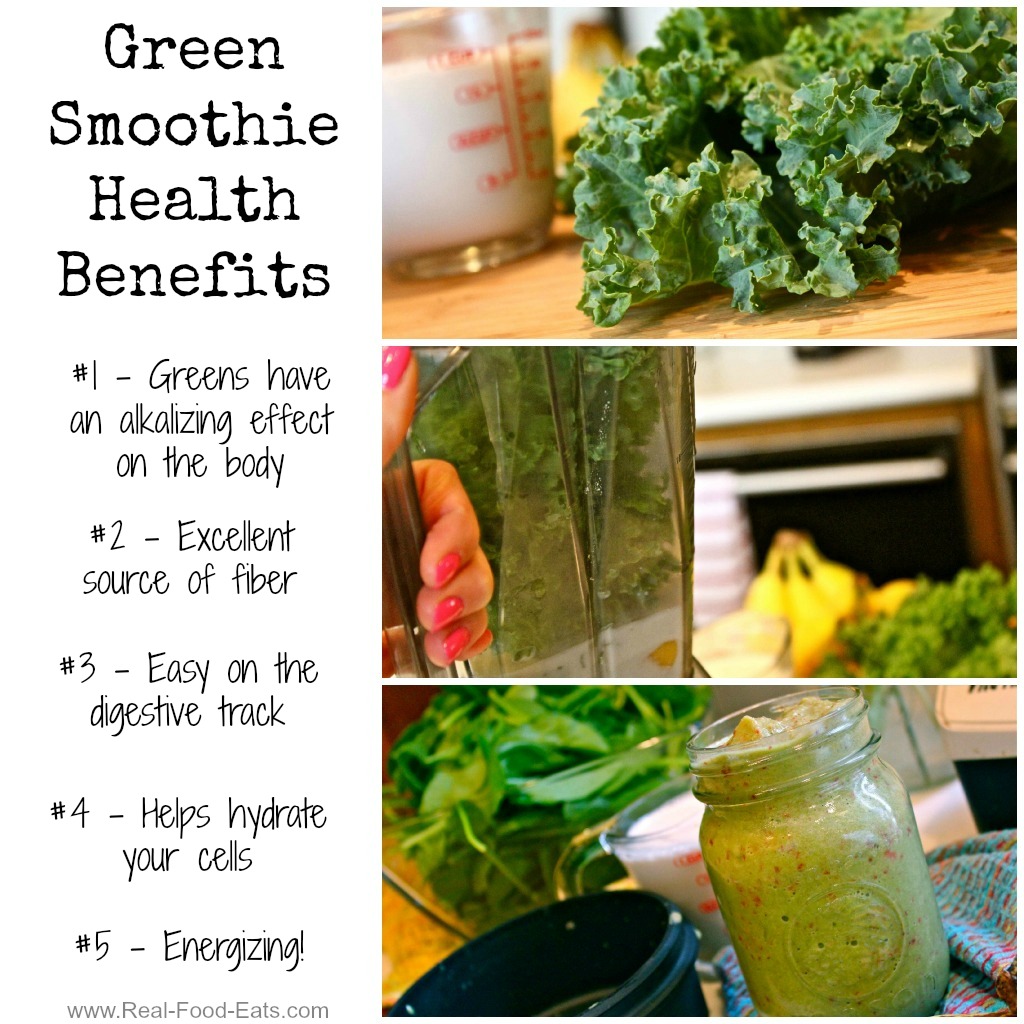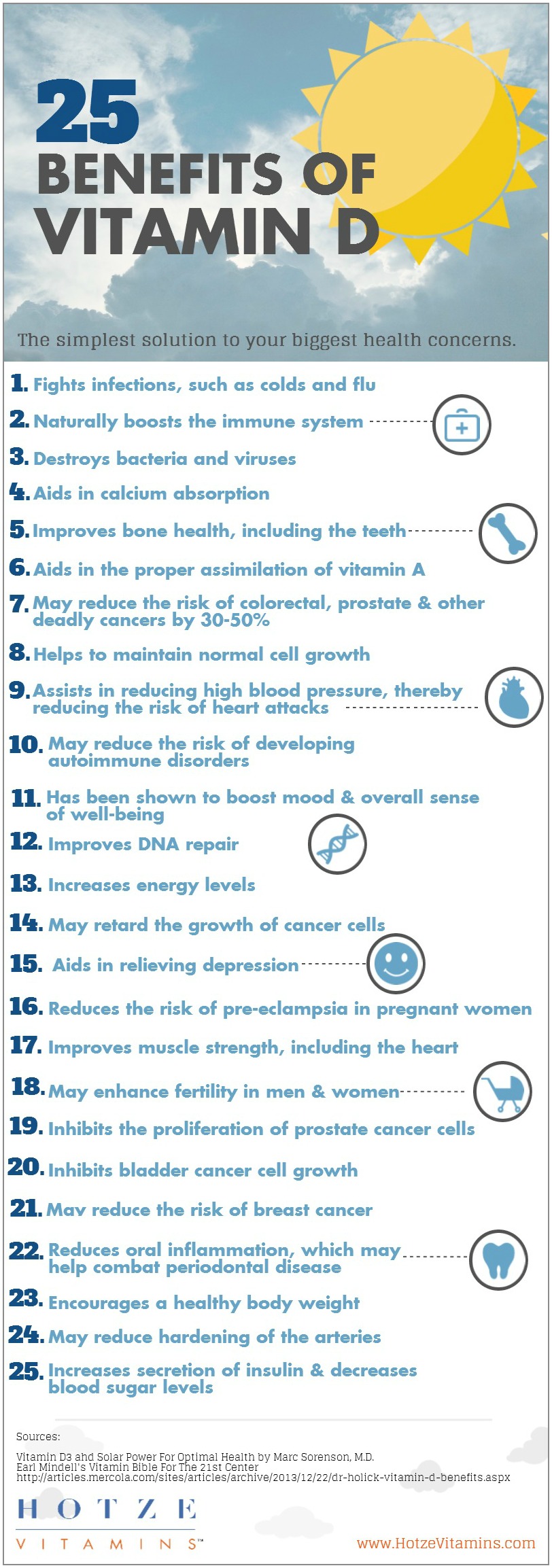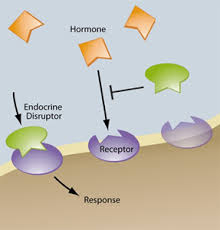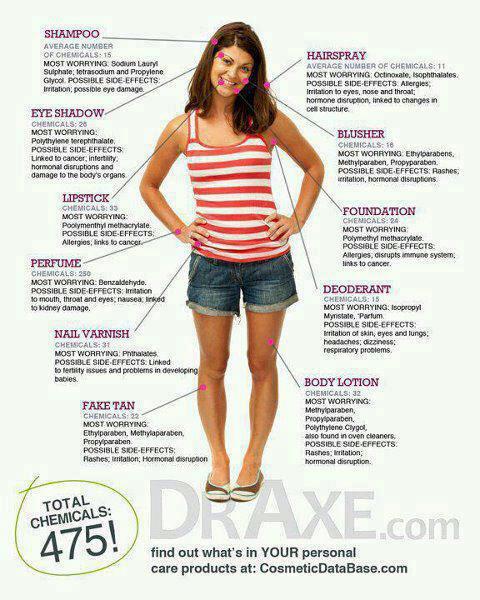Our professional team is committed to SAFE and LASTING Ammonia/PPD/Resorcinol FREE HAIR COLOR. The evolution of hair color.
Menopause: Discover Hidden Hormone Imbalances
I see it every day in the lives of my clients. Whether "creeping" or well on it's way, menopause brings about the many emotional facts of being exhausted, impatient and – in short, frazzled! The article below is a guest post from Candace Burch with ZRT Labs after being inspired by reading Dr. John R. Lee’s life changing go-to book on the subject, "What Your Doctor May Not Tell You About Menopause", and got smart.
2 Best Fall Beauty Smoothies: Detox & Cleanse (recipes inside)
Fall is my favorite time of year. I love summer but fall – The leaves are turning and the air starts to become crisper. This also means that Halloween and Christmas are right around the corner, and best of all, the apples.
Liver TLC for Fall
I can trust that you - like many - are on the run this Fall season. A zesty green smoothy for you and the family can be super refreshing and delicious. It also provides a easy way to detoxify the liver and cleanse the body while still enjoying a delicious treat or temporary meal replacement.
Skin Love through you LIVER!
A cleaned-up liver can process nasty toxins more efficiently which leads to clear, radiant and younger-looking skin. Blending fruits and vegetables in a smoothie versus juicing, boosts the absorption of all the beneficial vitamins and nutrients by keeping the fiber in the mix. This aids in cleansing and gets the body back into balance resulting in more energy and a natural glow.
Of course, we suggest choosing organic when possible to avoid heavily pesticide-sprayed produce. Pesticides are toxic to the body, far from beautiful and defeat the purpose of detoxification.
Filled to the brim with purifying ingredients, this revitalizing smoothie is a GREAT addition to take the stress of your mind, body, and adrenal's this change of season into the brisker air.

Enjoy TWO Green Beauty Smoothies
Directions and Ingredients:
-
8 oz coconut water – Contains enzymes that help to detoxify and repair the body
-
½ lemon peeled – Detoxifies the liver and helps convert toxins into water-soluble form that can be easily eliminated from the body
-
Small handful of parsley leaves – Loaded with vitamins A, C, K along with folate and iron which all benefit healthy skin
-
½ granny smith apple – Quercetin found in the apple skin tackles free radicals that cause damage and wrinkles
-
½ cucumber peeled & cut – Made of 95% water, keeps the body hydrated while helping it eliminate toxins
-
1 tbsp chia seeds – Filled with omega-3’s that boost collagen production and fiber to aid in cleansing
-
Handful of spinach – Chlorophyll in greens oxygenates and alkalizes the blood leading to less inflammation and glowing skin
-
¼ avocado – The good fats, polyunsaturated and monounsaturated, which help control the skin’s moisture level
-
Stevia to sweeten – Natural sweetener to satisfy a sweet tooth made from a plant with no sugar and impact on blood sugar levels
-
3-4 ice cubes
Blend ingredients until smooth and enjoy your Organic SUPER-WOMAN Green Beauty Smoothie.
Fall Apple Green Smoothie
With the leaves turning there is an abundance of delicious home grown organic apples!
Ingredients
-
1 Apple
-
1 Orange
-
1/2 Lime – Peeled
-
1″ Ginger (Frozen)
-
2 C. Spinach
-
1 C. Almond Milk
-
1 C. Ice Cubes
Instructions
-
Grate the frozen ginger
-
Peel the lemon
-
Remove the apple core
-
Blend it!
Smoothie reference{from my article in the Coco Eco Magazine EARTH ROCKS Spring/Summer 2014 issue on p. 50-51} Greensmoothieforbeauty
When does Menopause and Perimenopause Start? (are these hormone myths sabotaging you?)
MYTH: I don’t have to worry about hormones until menopause. Meanwhile, I can do whatever I want to my body – drink like a fish, party like a rock star, skimp on sleep – without consequences.
TRUTH: This is one of those myths that even most doctors believe!
Many hormone levels – such as estrogen, progesterone, and testosterone – start to drift downward in your twenties. Other hormones, like cortisol, often spike too high and pull other hormones out of balance. Women younger than thirty may not yet feel affected by the aging process, but perhaps they want to get pregnant (or keep the option open) or avoid the wrinkles that they see on their mom’s face.
At What Age Do Menopause and Perimenopause Start?
 Menopause occurs at a mean age of 51. Perimenopause, the years from about 35 to 50, are famous for hormonal chaos, but even Chinese Medicine recognizes that subtle hormonal shifts begin at age 28.Quite poetically, Chinese Medicine teaches that your energetic meridians are focused on your pelvic region during your reproductive years, and as reach toward menopause, chi starts to flow more toward your heart. In the West, we’re far less poetic. We focus on how many ripe eggs are left in the ovaries at any given time,how’s the egg quality based on a lab test, and when am I finally going to meet the life partner so that I can get busy having babies. Here’s where you want to focus your energy:
Menopause occurs at a mean age of 51. Perimenopause, the years from about 35 to 50, are famous for hormonal chaos, but even Chinese Medicine recognizes that subtle hormonal shifts begin at age 28.Quite poetically, Chinese Medicine teaches that your energetic meridians are focused on your pelvic region during your reproductive years, and as reach toward menopause, chi starts to flow more toward your heart. In the West, we’re far less poetic. We focus on how many ripe eggs are left in the ovaries at any given time,how’s the egg quality based on a lab test, and when am I finally going to meet the life partner so that I can get busy having babies. Here’s where you want to focus your energy:
Women In Their 20s…
… benefit from understanding that the best way to mind your hormones so that you are brimming with vitality begins early. Master your sleep (94% of us need 8 hours each night), eat nutrient-dense food (and not too much), stop sitting so much, and detox your liver periodically (off the alcohol). When you don’t indulge stress and let it overpower you, you’re actually creating hormonal grace. The reason is simple: Cortisol, the main stress hormone, controls the levels of the other key hormones in your body, including thyroid, estrogen, progesterone, and testosterone.
Women in Their 30s…
… may feel increasingly tense and overwhelmed, in need of better strategies on how to chillax. Your goal should be to prevent the high blood pressure, prediabetes, and accelerated aging that come with chronically high perceived stress.
Women in Their 40s/50s…
… may want to regain the buoyancy of their earlier life. Perhaps you want to wake up feeling more restored, without the obsessive thoughts or brain fog.
Women 60+
 … may wish to optimize their cognitive functioning—to improve their thinking, memory, and competitive edge. Don’t suffer needlessly. I don’t want you to be misinformed by prevailing myths, underserved by your doctors, or miseducated by the media. With natural hormone balancing, these years can be fun and sexy. It starts with being fully informed about your hormonal status, regardless of age.
… may wish to optimize their cognitive functioning—to improve their thinking, memory, and competitive edge. Don’t suffer needlessly. I don’t want you to be misinformed by prevailing myths, underserved by your doctors, or miseducated by the media. With natural hormone balancing, these years can be fun and sexy. It starts with being fully informed about your hormonal status, regardless of age.
Guest Post: Sara Gottfried
Do You Know How to Stay Clean in a Toxic World? LEARN HOW AT THE DETOX SUMMIT! (details inside)
As many of you know, our health and beauty company see's through a Functional Medicine lens. I’ve written about many times on my blog, the toxins of our environment, nutrition, beauty products, and more - is affecting our health in so many ways. This is especially important during pregnancy and early childhood.
The toxicity of our environment and how that is interacting with our genes. We call this the epigenetic influence. You can now learn about the latest research online through the DETOX SUMMIT!
It is free! Each day, a set of lectures will appear and you will have the whole day to listen to those lectures.
You can sign up for the Detox Summit here.
Do You Know How to Stay Clean in a Toxic World? LEARN HOW AT THE DETOX SUMMIT!
For example, I just finished this video where Soram Khalsa, MD shares great info on Women's Health & Toxicity. Here are a few important facts from his webinar:
-
There are over 85,000 known chemicals we interact in and 90% have never been tested for safety.
-
The average women uses 9 personal care products per day. Each product on average has 14 chemicals. This averages 126 chemicals per day that are known to disrupt our endocrine system.
-
Phthalates are a catalyst to an increase in Breast Cancer, inflammation, infertility, etc.
Head over and enjoy The Detox Summit online from August 4-11, 2014!
13 Signs That You May Have a Thyroid Disorder: Hypo or Hyper?
Hyper and hypo thyroid disorders can be very confusing to differentiate for women. This is a great article reposted from healthy and natural world (.) com. Enjoy, share and I hope it clears up any questions you may have had!
Your thyroid gland plays a very important role in your body. It is a butterfly-shaped gland in your neck, just above your collarbone. It is one of your endocrine glands, which make hormones that control many activities in your body.
There are a number of possible thyroid diseases and disorders, and the two of the most common thyroid disorders are hyperthyroidism (when your thyroid gland makes more thyroid hormones than your body needs) and hypothyroidism (when your thyroid gland doesn’t make enough thyroid hormones). Other diseases include goiter (enlargement of the thyroid gland), thyroid cancer, thyroid nodules (lumps in the thyroid gland) and thyroiditis (inflammation of the thyroid gland).
According to the American Thyroid Association more than 12% of the U.S. population will develop a thyroid condition during their lifetime, and these are many millions of people. Hypothyroidism is more common than hyperthyroidism and although the two disorders are closely linked, they have several important differences that affect diagnosis and treatment.
Here you can find a guide to the top 13 signs that you may have a thyroid disorder:
1. Fatigue and sleep disorders
Hypothyroidism - Fatigue is the number one symptom in hypo. You feel that you want to sleep all the time, or you sleep more than usual but still feel tired and exhausted with no energy. Hyperthyroidism – some people with hyperthyroidism find it hard to fall asleep, and therefore they feel tired or exhausted. This is because overactive thyroid can cause insomnia due to rapid pulse and anxiety which can make it hard to fall asleep or even wake you in the middle of the night.
2. Weight changes
Hypothyroidism - You have a weight gain or you find it very difficult to lose weight. This is one of the top symptoms in hypo. I have already written a few articles that will help you to lose weight by increasing your metabolism and by eating these foods. Hyperthyroidism – You may be losing weight although you eat the same amount of food as usual, or even losing weight while eating more than normal due to increased appetite.
3. Mood and mental changes
Hypothyroidism - You feel unusually depressed, sad and feeling down. This is because too little thyroid hormone affects the levels of serotonin in the brain. You may also find that your mind is not sharp and that you have poor concentration or poor memory or general brain fog. Hyperthyroidism – hyperthyroidism is more associated with anxiety or panic attacks, or you feel that you cannot relax. Also too much thyroid hormone can cause difficulty concentrating.
4. Bowel problems
Hypothyroidism - you have severe or long-term constipation. This is one of the top most common symptoms and is due to the changes in hormone level production that can cause a slowdown of digestive processes. Hyperthyroidism – you have diarrhea or irritable bowel syndrome (IBS).
5. Muscle or joint problems
Hypothyroidism - you feel a sudden numbness, tingling or pain in your limbs. This is because producing too little thyroid hormone can affect the signals sent from the brain and spinal cord throughout the body. You may also feel general muscular or joint stiffness, pain or weakness, or have tendonitis in the arms and legs. Hyperthyroidism – can also cause a variety of muscle or joint problems, such as difficulties in holding objects with hands, or reaching arms above the head or climbing stairs.
6. Irregular periods, fertility and libido problems
Hypothyroidism - your periods are heavier, longer, more frequent and more painful. You may also suffer from infertility, low sex drive and hormone imbalances such as PMS. Hyperthyroidism – you have shorter, lighter or infrequent periods. You may also suffer from infertility (both hypothyroidism and hyperthyroidism can interfere with ovulation, which impairs fertility).
7. Hair and skin changes
Hypothyroidism - your hair becomes dry and brittle and falls out easily. This is because too little thyroid hormone disturbs hair growth cycle. You may also have an unusual hair loss in the outer edge of the eyebrow or other body parts. Your skin might be dry due to slowed metabolism and your nails are brittle. Hyperthyroidism – can also cause hair loss typically just on your head and thin and fragile skin.
8. Body temperature
Hypothyroidism - your hands and feet are cold, or you feel cold and have chills, or your body temperature is consistently below 98.5. Hyperthyroidism – you sometimes feel too warm or sweat excessively.
9. Cholesterol Issues
Hypothyroidism - you have high cholesterol levels, especially when it’s not responsive to diet, exercise or medication.
Hyperthyroidism – you may have unusually low cholesterol levels. 10. Blood pressure
10. Blood pressure
Hypothyroidism - it is estimated that people with hypothyroidism have two to three times the risk of developing high blood pressure. Hyperthyroidism – systolic blood pressure rises (the upper number in a blood pressure reading) However, diastolic pressure usually stays the same or goes down a little.
11. Heart rate
Hypothyroidism - You may have slower heart rate. The heart rate is modulated by thyroid hormone, so with lower levels of thyroid hormone the heart rate is typically 10-20 beats per minute slower than normal. Hyperthyroidism – your heart may be beating too fast or you you have heart flutters or palpitations.
12. Neck enlargement (goiter)
A goiter is any enlargement of the thyroid gland. You may feel swelling or lump or discomfort in the neck or a hoarse voice. Goiter can occur both in hyperthyroidism or hypothyroidism.
13. Risk factors: Family History, age, gender and smoking
Some people are more likely than others to develop thyroid problems. Both genetic and environmental factors contribute to susceptibility of hyperthyroidism and hypothyroidism.
Family history – if you have a family history of thyroid problems, you are at a higher risk of having a thyroid condition yourself.
Gender and age – thyroid diseases are more prevalent in females, especially the elderly population. Women are five to eight times more likely than men to have thyroid problems.
Smoking – one component of tobacco smoke is cyanide, which is converted to thiocyanate, which acts as an anti-thyroid agent. The most dramatic effect of smoking on the thyroid is its association with hyperthyroidism. According to an article published in the Journal of the American Medical Association in 1993 smokers are twice as likely as nonsmokers to develop Graves’ disease (a swelling of the neck and protrusion of the eyes resulting from an overactive thyroid gland)
So if you suspect you may have a combination of some of these symptoms, you may want to visit your doctor who can diagnose hyperthyroidism and hypothyroidism by testing the levels of thyroid hormones in your blood. If you suffer from hypothyroidism, you can read my other post about 8 natural remedies to treat hypothyroidism.
25 Benefits of Vitamin D

Thank you: Hotzevitamins.com











